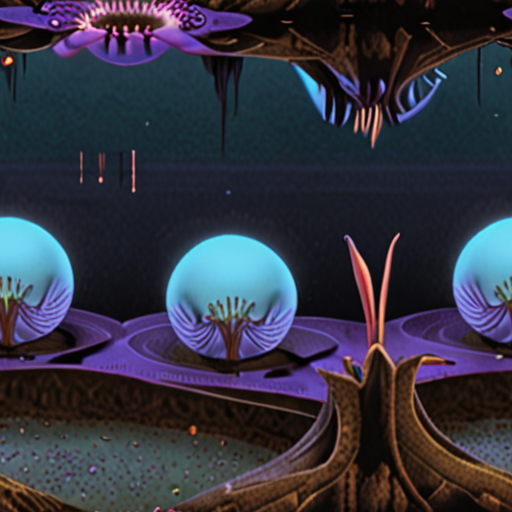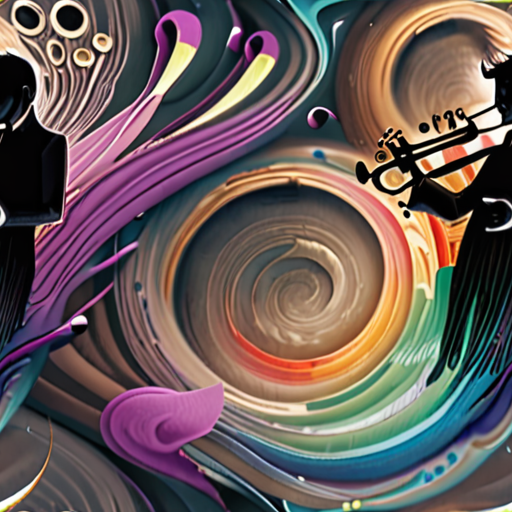The creative process is a complex and multifaceted phenomenon that has captivated artists, musicians, and writers for centuries. For musicians, understanding the intricacies of the creative process can be a game-changer, allowing them to tap into their full potential and produce innovative, boundary-pushing works that resonate with audiences worldwide. However, navigating the creative process can be daunting, especially for those who struggle with self-doubt, writer’s block, or uncertainty about where to start.

The 5 Stages of the Creative Process
As a musician and music enthusiast, I’ve always been fascinated by the creative process and how it shapes our art.
- Preparation
- Incubation
- Illumination
- Evaluation
- Implementation
The preparation stage of the creative process is all about setting the foundation for your work. This involves researching your subject matter, defining your objectives, and gathering inspiration from various sources.
I find that reading books, watching documentaries, and listening to podcasts can be great ways to spark ideas and gain insight into the world of music.
For example, I recently read an article on Musician On Fire that discussed the importance of finding your unique sound and style.
The incubation stage is all about letting your ideas simmer and percolate in the background. This is where you take the information and inspiration you’ve gathered during the preparation stage and let it marinate in your mind.
I find that taking long walks, practicing yoga, or simply daydreaming can be great ways to tap into my creative subconscious and come up with new ideas.
For instance, I once had an idea for a song while I was out hiking in nature. I jotted down the lyrics and melody in my notebook and later developed it into a full-fledged song.
The illumination stage is where the magic happens – this is where your ideas start to take shape and you begin to see the big picture.
I find that brainstorming sessions with fellow musicians or collaborators can be incredibly helpful in sparking new ideas and gaining fresh perspectives.
For example, I once had a brainstorming session with my bandmates and we came up with a concept for a new album based on a theme of social justice.
The evaluation stage is all about critiquing and refining your work. This is where you take a step back and assess what’s working and what needs improvement.
I find that getting feedback from trusted friends, family members, or mentors can be invaluable in helping me identify areas for growth and development.
For instance, I once received feedback from a producer who suggested I experiment with a new production technique to enhance the sound of my track.
The final stage of the creative process is implementation – this is where you bring your ideas to life and share them with the world.
I find that having a clear plan and timeline can help me stay focused and motivated throughout the creative process.
For example, I once set a deadline for myself to finish recording an album and worked tirelessly to meet that goal.
Generating Creative Ideas as Musicians
We’re always looking for ways to spark creativity and push the boundaries of our music.
- Experimentation : Trying out new sounds, instruments, and techniques can lead to unexpected breakthroughs and fresh inspiration.
- Collaboration : Working with fellow musicians, producers, or songwriters can bring diverse perspectives and ideas to the table.
- Inspiration from Other Art Forms : Drawing from literature, visual art, film, or dance can infuse our music with new themes, emotions, and styles.
- Mindfulness and Meditation : Cultivating mental clarity and calmness through mindfulness practices can help us tap into our subconscious mind and access hidden creative potential.
- Journaling and Reflection : Writing down thoughts, feelings, and experiences can help us process and reflect on our emotions, leading to new ideas and insights.
- Exploring Different Genres and Styles : Venturing into unfamiliar musical territories can broaden our understanding of sound, rhythm, and melody, ultimately influencing our own unique style.
- Setting Challenges and Constraints : Imposing limitations on ourselves, such as working within a specific time frame or using only certain instruments, can stimulate creativity and innovation.
- Seeking Out New Experiences : Traveling, attending concerts, or participating in workshops can expose us to new cultures, people, and environments, which can inspire fresh ideas and perspectives.
- Embracing Failure and Risk-Taking : Embracing uncertainty and taking calculated risks can lead to unexpected breakthroughs and growth as musicians.
- Staying Curious and Open-Minded : Maintaining a childlike sense of wonder and curiosity can keep us receptive to new ideas and influences, allowing us to stay inspired and motivated.
By incorporating these strategies into our creative routine, we can unlock new sources of inspiration and continue to evolve as musicians.

The Four Major Creative Processes
I’ve always been fascinated by the creative process, and I’m excited to share my knowledge with you.
-
Preparation
This stage involves gathering information, researching, and planning. It’s essential to have a solid foundation before diving into the creative process.
-
Incubation
During this stage, ideas start to simmer in the background. It’s a time for reflection, relaxation, and letting the subconscious mind work its magic.
-
Illumination
This is the moment of insight, where the idea suddenly clicks into place. It’s a feeling of excitement and inspiration, and it’s often accompanied by a sense of wonder.
-
Verification
In this final stage, the idea is refined and developed. It’s a time for testing, experimenting, and perfecting the concept.
These four stages are not linear, but rather interconnected and cyclical. They can overlap, repeat, or occur simultaneously, making the creative process a complex and dynamic journey.
As a musician, I’ve experienced these stages firsthand. From preparing for a gig to incubating new song ideas, illumination strikes when I least expect it, and verification is a continuous process of refinement and perfection.
Understanding the creative process has helped me tap into my full potential and unlock my creativity. By embracing these four stages, you too can unlock your own creative potential and bring your ideas to life.

The 8 Stages of the Creative Process
We’re excited to share our knowledge of the creative process with you, and we’ll start by breaking down the 8 essential stages that every artist, musician, and writer goes through.
-
Stage 1: Inspiration
Inspiration can strike at any moment, whether it’s a conversation with someone, a book you’ve read, or a song that resonates with you. As creatives, we need to stay open to new experiences and ideas to fuel our imagination.
-
Stage 2: Idea Generation
Once we have inspiration, we need to let our minds wander and explore different possibilities. This is where brainstorming and mind mapping come in handy – tools that help us organize our thoughts and bring order to chaos.
-
Stage 3: Research and Planning
Before diving headfirst into a project, it’s essential to do our due diligence and gather as much information as possible. This might involve reading books, watching documentaries, or conducting interviews to gain a deeper understanding of the subject matter.
-
Stage 4: Outlining and Structuring
With our research complete, it’s time to create an outline and structure our work. This helps us stay focused and ensures that our final product flows smoothly from beginning to end.
-
Stage 5: Creation and Execution
This is the fun part! With our plan in place, we can finally start bringing our vision to life. Whether it’s writing a script, composing music, or painting a masterpiece, this stage requires dedication and hard work.
-
Stage 6: Feedback and Revision
No matter how confident we are in our work, there’s always room for improvement. Seeking feedback from others and revising our piece accordingly is crucial to producing something truly exceptional.
-
Stage 7: Refining and Polishing
As we near completion, it’s time to refine and polish our work. This involves making any necessary edits, tweaking details, and ensuring that everything is perfect before sharing it with the world.
-
Stage 8: Launch and Promotion
Finally, it’s time to share our creation with the world! Whether it’s releasing a new album, publishing a book, or launching a website, this stage requires strategy and marketing savvy to reach our target audience.
At Oedipus Band, we believe that mastering these 8 stages of the creative process is essential for producing high-quality work that resonates with audiences everywhere. By staying true to ourselves and our artistic vision, we can create something truly special that leaves a lasting impact on the world.
The 7 Stages of the Creative Process
As a musician and artist, I’ve always been fascinated by the creative process and how it can lead to innovative ideas and groundbreaking work.
- Intending
- Incubating
- Investigating
- Composing
- Deepening
- Completing
- Going Public
This stage involves setting goals and intentions for your project or idea. It’s essential to define what you want to achieve and why it matters to you.
During this stage, you allow yourself to relax and let your subconscious mind work on the problem or idea. This can involve taking breaks, meditating, or engaging in activities that stimulate your creativity.
In this stage, you gather information and conduct research to gain a deeper understanding of your subject matter. This can involve reading books, articles, and online resources, as well as conducting interviews or surveys.
With a solid foundation of knowledge and inspiration, you begin to create your work. This can involve writing, drawing, painting, or composing music.
As you continue to work on your project, you refine your ideas and explore new possibilities. This stage involves revisiting your initial intentions and making adjustments as needed.
Finally, you reach the completion stage, where you finalize your work and prepare it for sharing with others. This can involve editing, proofreading, and polishing your final product.
The last stage involves sharing your work with the world. This can involve publishing your writing, exhibiting your art, or performing your music.
By understanding these seven stages of the creative process, you can better navigate your own artistic journey and unlock your full potential as a creator.
At Oedipus Band, we’re committed to helping emerging artists develop their skills and share their talents with the world. Whether you’re just starting out or looking to take your career to the next level, our community is here to support you every step of the way.
Check out our music tips section for more advice on songwriting, recording, and performing live.
For more information on the creative process, visit the Musician’s Guild website, which offers a wealth of resources and guidance for musicians of all levels.
Remember, creativity is a journey, not a destination. By embracing the seven stages of the creative process, you can unlock your full potential and achieve your dreams as an artist.

What are the Three Ss of the 3S Model of Creativity?
The 3S model of creativity is a framework that helps individuals unlock their full potential and foster innovative thinking.
- Skills : Developing skills is essential for creativity. This includes learning new techniques, practicing existing ones, and staying up-to-date with the latest trends and technologies.
- Strategies : Effective strategies are crucial for applying skills to real-world problems. This involves understanding how to approach challenges, setting goals, and prioritizing tasks.
- Synergies : Synergies occur when different skills and strategies come together to create something new and valuable. This requires collaboration, communication, and a willingness to take calculated risks.
By focusing on these three Ss, individuals can develop a growth mindset, cultivate creativity, and drive innovation in their personal and professional lives.
Applying the 3S Model in Practice
- Identify areas where you need to develop new skills or improve existing ones.
- Develop effective strategies for applying your skills to real-world problems.
- Cultivate synergies by collaborating with others, sharing ideas, and taking calculated risks.
Remember, creativity is a muscle that can be developed with practice and dedication. By embracing the 3S model, you can unlock your full potential and achieve your goals.
Conclusion
The 3S model of creativity provides a powerful framework for unlocking individual potential and driving innovation. By developing skills, implementing effective strategies, and cultivating synergies, individuals can overcome obstacles, achieve success, and make a lasting impact in their chosen fields.
0 Comments